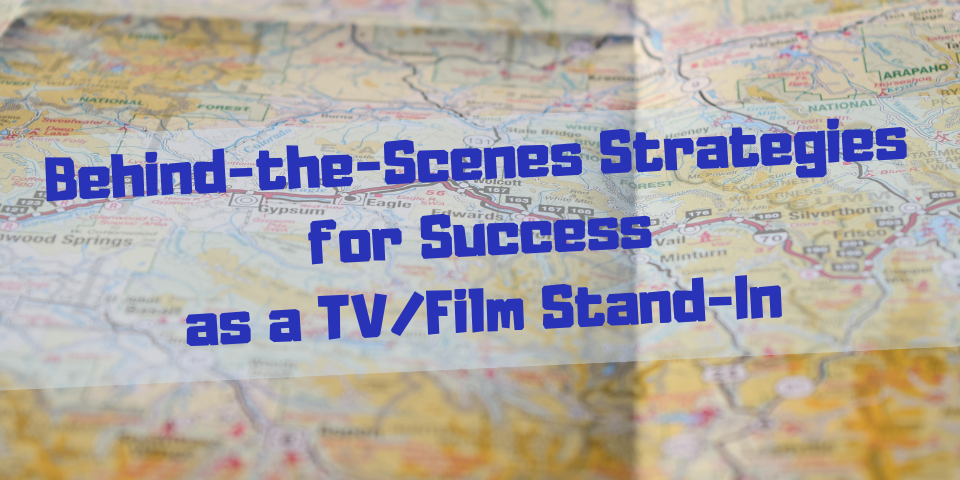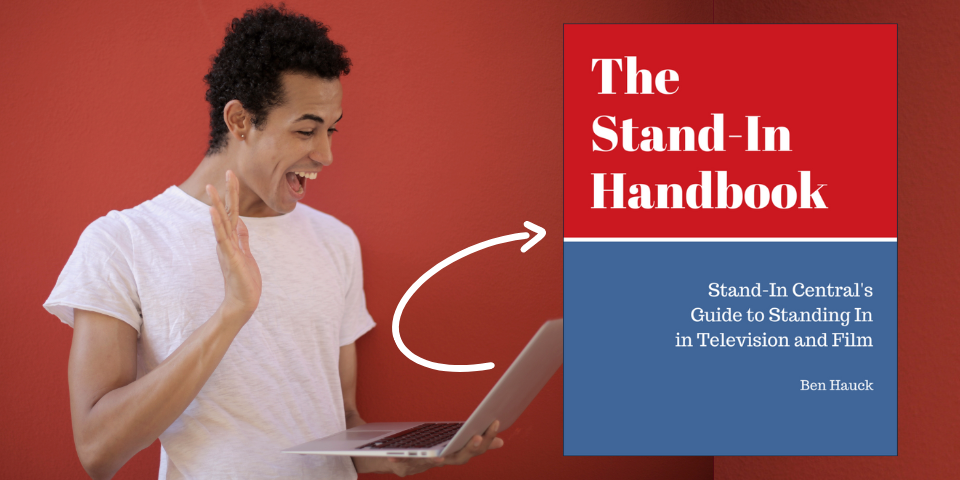You might book a day of stand-in work on a TV or film project. You might find you really like it—and you want to come back for more stand-in work. How can you do that?
Ultimately, the choice to bring you back for another day of stand-in work is not yours. But there may be things you can do behind-the-scenes when you’re working to increase your credibility as a stand-in, and thereby hopefully improve your chances of returning to work again.
Of course, there is an infinitude of things you can do. Here are some ideas Stand-In Central has noticed help earn a stand-in more job security and additional days of work on a television show or movie.
Watch the Monitors
Nearly always stand-ins watch marking rehearsals. That’s when they learn what their actor does in a scene. However, after that point, many stand-ins check out mentally, and don’t try to learn anything more about what their actor does in a scene.
The fact is, lots of times, once actors start shooting, they change aspects of their performance. Maybe they sat in marking rehearsal, but stand when shooting the scene. Maybe they turned clockwise in the marking rehearsal, but once the cameras were set up, they decided turning counterclockwise was better. Maybe they completely changed their actions in the scene. Maybe those changes weren’t apparent in the first take, but by the fourth take, those changes were locked in.
A stand-in who is not watching the monitors usually will not know about these changes. So when called back to set for another camera setup, they are clueless about the changes — when the camera operators and director know full well about the changes. The stand-in in ignorance of those changes can look bad; a stand-in who knows about the changes can look great.
So, to improve your chances of getting called back, watch the monitors during takes, and note any changes to your blocking. When you know about the changes, you tend to help move production along and spare the crew’s finite energy in having to explain the changes to you.
Ben’s Tip
When watching the monitors, watch from afar. You don’t want to hover over the director’s or producer’s monitors, especially if they don’t really know you. If the production transmits the shooting over an app, ask for credentials and watch from your smartphone.
Get Color Cover and Hairstyle Information Before the Day of Work
Many stand-ins report to work in their own choice of clothes and hairstyle. Generally, that is fine.
However, some directors of photography (DPs) prefer stand-ins to wear clothing that is similar in style and/or color as their actor. If production provides this clothing to a stand-in, the clothing is called “color cover.” Color cover may help a DP light or compose a shot better.
Also, some DPs prefer stand-ins to have similar hair styling as their actor. Generally, this means if the actor’s hair is worn up and off the shoulders, then the DP would prefer the stand-in to wear his/her hair in this way, too. A similar hair styling between actor and stand-in can help a DP understand shadows and lighting better.
If you are able to find out before work what your actor will be wearing (colorwise or otherwise) and how your actor’s hair will be styled (such as up or down), you may find your respect for the DPs work has the DP enjoying working with you. A happy DP may lead to a recommendation to bring you back for another day.
Read Any Advance Information Before You Leave Work
Stand-ins usually are left out of the information loop when it comes to production, often at the mercy of what little information a casting director might give the night before. Stand-ins, thus, frequently don’t know what’s going on when they go to work, and also have a difficult time predicting their workdays.
If you come across a callsheet, a prelim (preliminary callsheet), sides, or even a one-liner or DOOD (day out of days), read it over and soak up its information. If it helps, photograph it for review later. Doing this, you will be better in tune with upcoming shooting needs.
With this information, you may be better prepared to work in suboptimal conditions like mud or cold, and when prepared, you come off as just that much more professional.
If You’re a Utility Stand-in, Mind Your Actors’ Heights and Glasses
If you’re hired as a utility stand-in (meaning you’re standing in for multiple actors), you come off a bit more professional and on top of your game when you make important adjustments to your appearance depending on the actor for whom you’re standing in.
If your actors are your height and taller, bringing heel lifts you can put in your shoes or a comfortable taller shoe option on your own will help camera operators deal with differences between actor and stand-in height.
If your actors are your height and shorter, wearing flats to work and also spreading your legs slightly to approximate your shorter actor’s height may similarly help camera operators set up shots.
Most actors don’t tend to wear glasses, but glasses can affect how a shot is lit or how cameras are set up. A stand-in who is able to add glasses when a second actor is wearing glasses in a scene may surprise a production with how observant the stand-in is.
Do Your Job without Being Asked
One of the best feelings as a stand-in is to already be where you need to be—or doing what production wants—before they call for you.
That generally requires the ability to anticipate what a production needs from stand-ins. That skill will come with experience, and as long as you are interested in servicing other crew members who work with stand-ins, you will start to understand what they usually want and regularly position yourself to immediately help when needed.
A stand-in who seems always to be where needed when called really earns the respect of a production. ADs and PAs won’t have to continually chase you down (as they seem to with other stand-ins), and they may come to feel confident you’re likely right where you need to be when needed. That is a value to a production and can mean a production wants you there.
Always Communicate When You’re Stepping Off Set
Similarly, if you step off set, always communicate this either to an AD, a PA, or as a last resort, another reliable stand-in. This may be to go to craft services, go to the restroom, take a phone call, or just take a break.
Stand-ins do from time to time need to step off. When you communicate regularly with production your whereabouts, you gain their trust they will be able to find you especially at a moment’s notice.
Be Enough Early
While you’re only paid for your work time, to help earn a great reputation, ensure you show up early enough to eat, read the scene, and possibly collect color cover if you want.
This way you’ll be prepared right at crew call or when your scene starts rehearsing. Being prepared creates a great impression on production, which can lend to future callbacks!
Conclusion
These are just some ideas. Apply them behat your next stand-in jobs, and see if they pay off over time with more recurring stand-in work!
Have any other similar tips for getting back on a TV show or film as a stand-in? Have success trying any of these? Post your thoughts in the comments below!







Leave A Comment